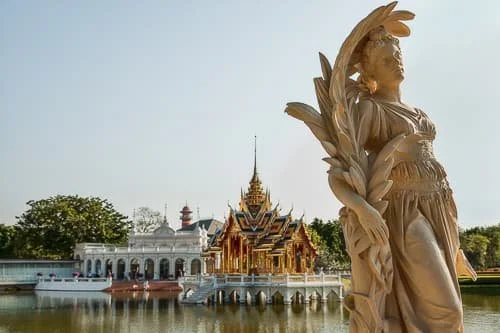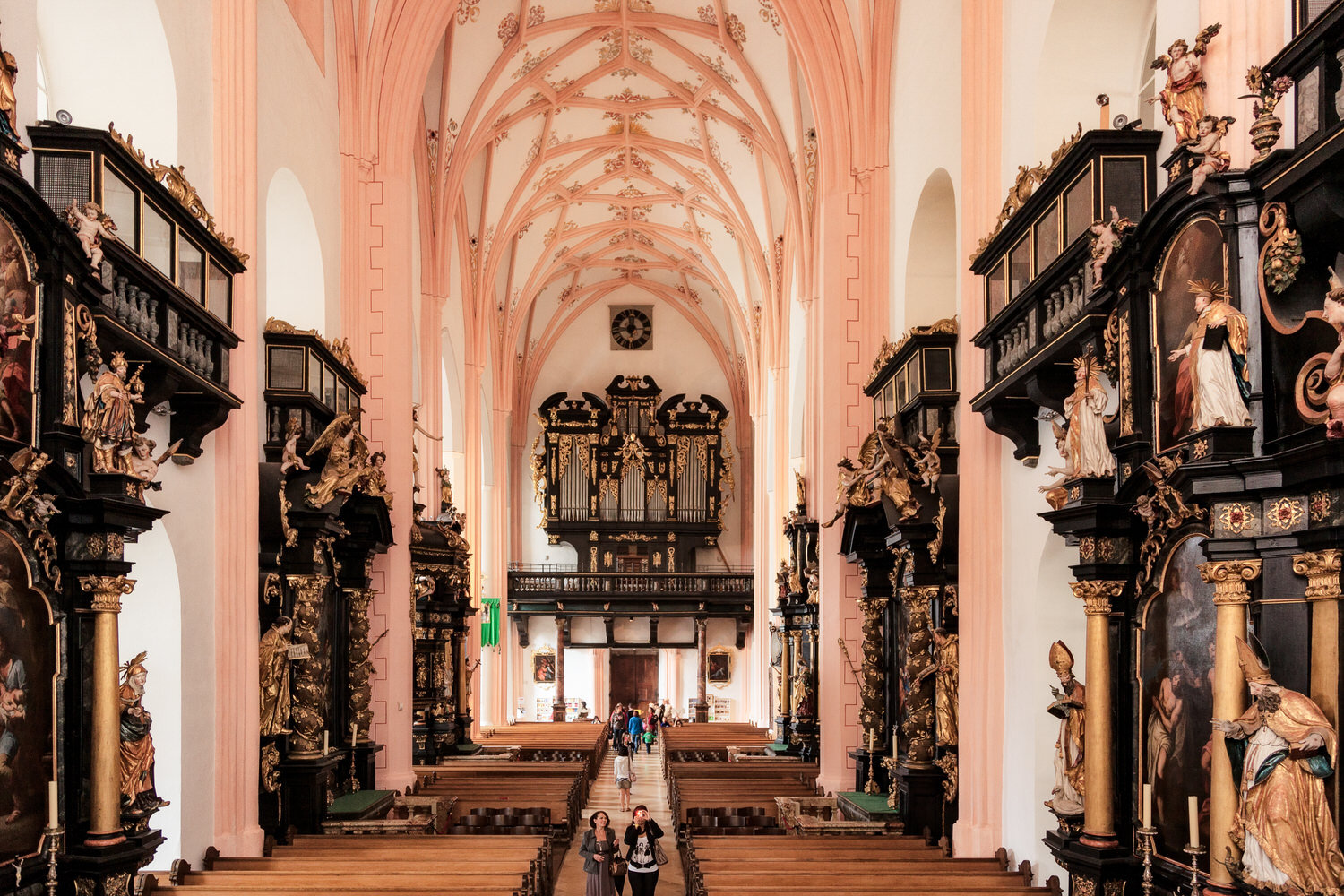Bruges Architecture Adventure: How to Capture a Medieval Marvel
Church Of Our Lady, Bruges a medieval marvel in Belgium.
Here's a classic view, through an archway, onto a bridge and towards the medieval Church Of Our Lady, Bruges in Belgium. It's one of my favorite black and white photos. Nonetheless, you might be surprised to discover that this simple looking scene, is also one of the most difficult photos I've ever made.
There was no mountain climbing, long bus rides, horrendous weather or xenophobic local authorities to deal with when photographing this medieval marvel.
But there was a lot of pedestrian traffic, mostly locals crossing this footbridge on their way home from work at the end of the day.
The problem was that I made the photo from within a closed shelter at one end of the footbridge. That made it impossible to see anyone coming, until they were on the footbridge and literally in the middle of the composition.
And this was back in the day when, even if I’d wanted to employ Photoshop to remove pedestrians from the image, that kind of photo retouching was not commonplace.
So you can see that there's the reality of the photo, that of a serene, nostalgic and historic site, versus the reality I had to face when actually making the image.
No problem, thought I, I'II just move my tripod and make way. After all I never want to delay or obstruct anyone’s progress, particularly when it’s dinner time.
But that wasn’t as easy as it sounds.
Actually, it was quite an endeavor to put the tripod back into position and achieve the same carefully constructed composition, on the uneven cobblestone pathway, each time a pedestrian crossed the narrow bridge.
The image was composed with great care, which is why I rarely crop my photos on the desktop.
Contemporary HDR Photo Captures a Medieval Marvel
The process was particularly difficult to complete as the final photo was a composite image, assembled on the desktop, from a long exposure HDR sequence.
It took a number of attempts to complete the series of long exposures, in the HDR sequence, before yet another pedestrian walked into the composition.
Thankfully my patience was rewarded and, in the fading gloom, I was able to successfully complete the process.
I opted for a HDR workflow not just because of the high dynamic range I was photographing under, but because I wanted to record as much detail as possible.
The idea was to create the image I pre-visualized in my minds eye. That of a classic, highly detailed black and white photo exhibiting an expansive range of tones, from dark to light.
High Dynamic Range (HDR) photography allowed me to do so by combining a series of different exposures, from dark to light, into a single, composite image as part of my post processing workflow.
Why Composition is Critical to Black and White Photography
I love color photography yet, at the end of the day, some subjects or scenes are simply not well suited to being reproduced in color. That was most certainly the case when I photographed this medieval marvel in Bruges.
Frankly, sometimes color just gets in the way.
Conversely, professing a preference for black and white is not enough. To make a great black and white photo you actually need to understand what subjects or scenes will look good reproduced in a black and white photo.
Likewise, you need to know what to do in camera and, where applicable, on the desktop to produce the best black and white image you can.
Let's look at some subjects that aren't well suited to being rendered in color.
teenager displaying the ravages of ache inflamed skin
older Caucasian individual with a little old wine drinker me complexion
How about some scenes that may not photograph all that well in color?
An architectural interior where an incorrect white balance has been manually set by the photographer with their camera in JPEG mode.
That problem can often be remedied in camera, with a subsequent image, as long as you know what to do to fix the problem.
A scene where shape, texture and/or relatively hight contrast are central to the success of the image
Art of Great Black and White Photo Composition
The above photo is the result of a day happily exploring Bruges in the Flemish speaking area of Belgium.
I love Bruges, it's one of the most beautiful cities I've ever had the pleasure to visit and photograph.
The weather conditions where overcast and the day was drawing to an end by the time I discovered this location. The scene contained very little color, yet with compositional elements such as light, shape, texture and tone I knew I was on a winner.
Nevertheless, as mention previously, it was a very difficult image to make. I remember having to work really hard to get the right framing and balance in the composition.
This kind of image really needs to be, dare I say, perfect. Sharpness, framing and depth of field (DOF) are critical to its success.
Enter my lovely Right Right Stuff TVC-33 tripod and Really Right Stuff BH-55 Ballhead.
The framing was very hard to achieve, particularly as I was standing on uneven cobblestones in the middle of a thoroughfare.
It wasn't exactly peak hour but, no sooner had I got my composition just about right, someone would walk onto the bridge causing me to have to move my tripod to allow them to get past.
This happened numerous times until, finally, pedestrian traffic slowed enough to give me the time I needed to make the series of exposures required to produce the HDR image you see at the top of this post.
You'll notice the amazing amount of sharpness, from foreground right through to the buildings in the background.
Maximum sharpness, achieved by supporting the camera on a tripod and employing a large depth of field (DOF), was essential for me to showcase the tremendous texture within the arch, footbridge and church I was photographing.
You can imagine that to achieve such a large depth of field, under such low light, required very long exposure times in the composite HDR image. Again, a quality tripod and ball head made that possible.
I'd say there are a few other examples of how strong composition elevated this image beyond that of a snapshot. To illustrate this point, let's explore the composition a little deeper.
How To Direct Attention to A Medieval Marvel
You’ll notice how I was able to made use of the arch-shaped entrance as a frame within a frame to guide the eye through the image.
The lovely archway provides a great way to frame the other pictorial elements within the scene, including the stone footbridge and the splendid Church Of Our Lady Bruges in the background.
As such, the way I’ve utilized the archway provides a great example of filling the frame a compositional concept that’s very important to me.
It’s true to say that I make a considerable effort to ensure I achieve a great composition, in camera, whenever I’m making photos.
I do this my treating my camera’s viewfinder as a painter might treat a canvas. That encourages me to take responsibility for everything that’s included and excluded from the composition.
Look For Shapes In Your Photos
This image is full of shapes. Notice how the shapes that are most dominant, such as those of the archway and bridge, have been accentuated by light.
The absence of light causes shadow and, when an illuminated area is adjacent to a shaded area, enhances shape.
Line Leads The Eye And Helps Structure the Photos
Notice how the vertical walls on either side of the bridge, as well as the handrail, led the eye through the frame. This adds significantly to the sense of three-dimensional space within the bounds of a two-dimensional photo.
Tantalizing Texture And The Wow Factor
In addition to the use of line, the unevenness of the cobbled pathway and the use of bricks throughout the frame make texture the defining element of composition within the image.
Being mindful of such things should help you improve the composition of your own photos by encouraging you to frame your image around what’s important.
Photography and Light | a Most Intimate Relationship
Photography is nothing without light and it's the way that light gently caresses the individual stones that really brings this scene to life.
It’s an example of how the best light is often at the end of the day, after the sun has set below the horizon.
When most photographers have packed up their camera gear and are heading back to the car, I’m on the look to make the most of the gentle, soft light of twilight.
The Beauty Of Metaphor Found in A Medieval Marvel
Whether universal, cultural or personal, the presence of metaphor in photographs should never be downplayed.
At the very least this image talks about a way forward, through the inevitable trials and tribulations that life throws up at us all.
I feel the light on the bridge encourages the viewer forward, not just visually, but metaphorically.
There’s just so much to see in a photograph. There’s what’s there, in the picture, and there’s what’s referred to.
The more time we take to look for such connections, and to think about why a particular image moves us, the more we learn and the better and more meaningful our own photography practice will become.
I hope you enjoy the nostalgic feel associated with the black and white rendering of this interesting and historic architectural element from the lovely medieval city of Bruges in Belgium.
After a long day of walking the backstreets and alleyways of Bruges, I found this photo quite challenging to make. But it was absolutely worth the effort and it's an image I'm really quite proud of.
Of course, the fact that it was a technically and compositionally difficult image to make is irrelevant, from the point of view of anyone looking at the final image.
But it’s an image that, despite a full range of textures and tones, is easy on the eye and displays a sense of harmony and balance. And it’s this level of cohesiveness that, to my mind, makes this a very successful photo.







